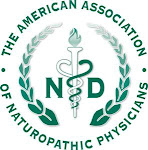Photo by Rachel Tayes via Flickr, used under the Creative Commons License.
There is a Hebrew prayer that expresses gratitude after tasting the first fruit of the season. This morning I am wondering whether there shouldn’t also be a prayer for the last taste of the season. I think this as I toss our last sprig of fresh basil into a pan of hot olive oil and the kitchen fills with the odor. The basil is in competition, though, with a pot of applesauce; I’d collected golden yellow apples that last night’s wind knocked off the tree around the corner. With the clock’s dropping back over just two weekends ago, there’s room in my morning schedule to make pack away a jar of applesauce before leaving for the office. The weather here in Colorado collaborated to produce a bumper crop of fruit here in Denver. After watching cherries, apricots, plums and apples compost on the lawns of neighbors who have neglected to harvest their bounty, I’ve taken it upon myself to save what I can. Poppy also has taken advantage of the apples especially, and insists on eating a stomach full each day.
My wife Rena and I have been making grape jelly on weekends with some of the most flavor-filled Concord grapes I can even recall tasting. Thus the last few weekends have found me gathering the grapes hanging into an alley just off Montview Boulevard. This has led me to the grocery store, and to start experimenting with the new forms of pectin available. No doubt some reader will write to tell me that I shouldn’t use these modified pectins, but at this point, in my ignorance, they are very exciting. Traditional jelly-making required very high sugar concentrations to set. If I recall correctly, one heated the jelly ‘broth’ to about 220 degrees Fahrenheit, a temperature at which the mixture was about 65% sugar. Without the high sugar concentration, the jelly wouldn’t set. It had to be sugar; the pectin wouldn’t jell if you tried substituting honey.
Times have changed and food chemists have developed pectins that don’t require added sugar and will still jell if sweetened with honey. This is why you can buy sugar free jelly and preserves in the grocery store. We made our first batch of grape jelly the old fashioned way, making juice from the grapes and cooking it down with what seemed an enormous amount of sugar. Our second batch is still setting, but we made it without adding any sugar. I’m quite looking forward to opening the jar for my first taste in a few weeks.
An excellent discussion of how to make no sugar jellies is available from the University of Tennessee’s Agriculture Extension Service: www.utextension.utk.edu/publications/spfiles/SP325-F.pdf
This leads me to the point in this blog piece when I turn on my computer’s link to the National Library of Medicine and look up some current scientific data linked to whatever I am ruminating upon.
It so happens that there is a new paper looking at the effect of drinking Concord grape juice on blood pressure published a just over a week ago.
Researchers at the Boston University School of Medicine, almost within sight of Concord, the town where the grapes are originally from, conducted a placebo-controlled trial of grape juice in mildly hypertensive individuals. This was a double-blind cross over study. 64 otherwise healthy people participated and drank either grape juice or a placebo for two months, took a month off, and then switched beverages.
Although no statistically significant difference in average blood pressure was measured, several endpoints of interest did change during the grape juice portion of the study. Night-time blood pressures dropped 1.4% while drinking grape juice, while they increased 2.3% during the placebo phase. Blood sugar decreased 2 mg/dL while drinking grape juice, and increased 1 mg/dL during the placebo phase.i Interesting, but not fascinating.
These results are different from an earlier study from 2004. In this earlier study that was conducted in Korea, systolic blood pressure decreased an average of 7.2 mm Hg (p = 0.005) and diastolic blood pressure average by 6.2 mm Hg (p = 0.001) at the end of 8 weeks.ii In the new study. participants drank 7.5 ml /kg body weight, while in the older study, 5.5 ml/kg body weight was consumed.
Could the grape juice polyphenol content have varied, or could there be some genetic variant that differed between populations? It’s not clear.
Whatever the case with these studies, I remain enchanted with the idea of making sugarless jams and jellies, and look forward to next summer’s possibilities already. And as far as my pondering the lack of a prayer for the last of the season, well, it’s obvious that wiser ones than I understand that one never knows which taste will be our last so that all that we can mark is the first.
____________________________________________
i Dohadwala MM, Hamburg NM, Holbrook M, Kim BH, Duess MA, Levit A, Titas M, Chung WB, et al. Effects of Concord grape juice on ambulatory blood pressure in prehypertension and stage 1 hypertension. Am J Clin Nutr. 2010 Nov;92(5):1052-9.
ii Park YK, Kim JS, Kang MH. Concord grape juice supplementation reduces blood pressure in Korean hypertensive men: double-blind, placebo controlled intervention trial. Biofactors. 2004;22(1-4):145-7.





No comments:
Post a Comment